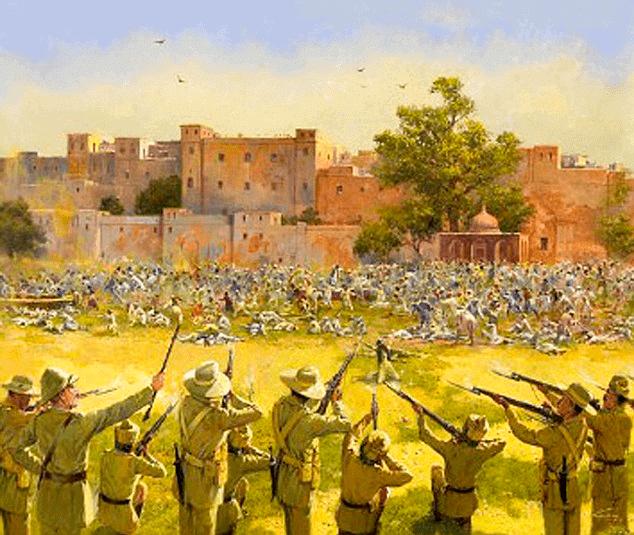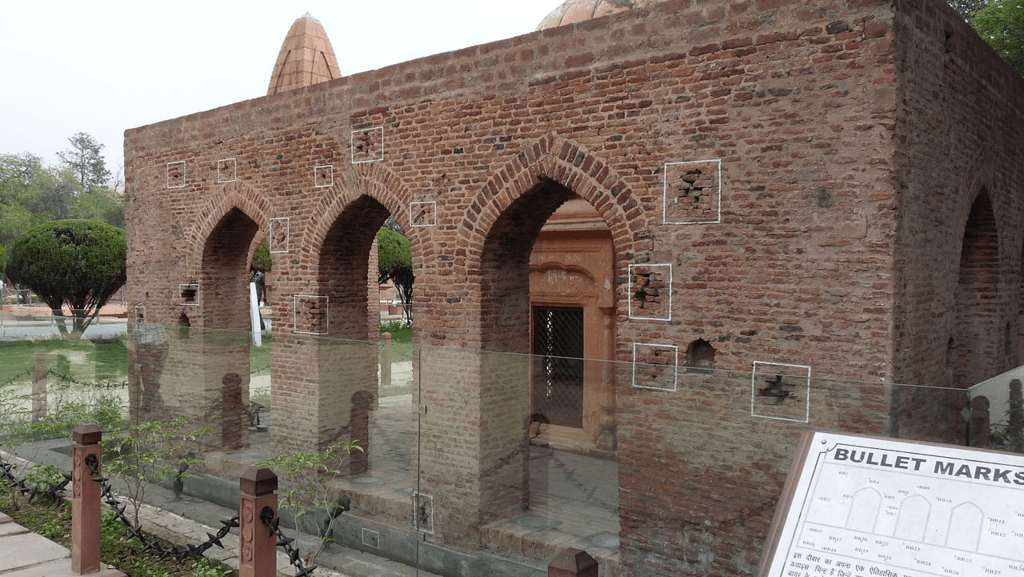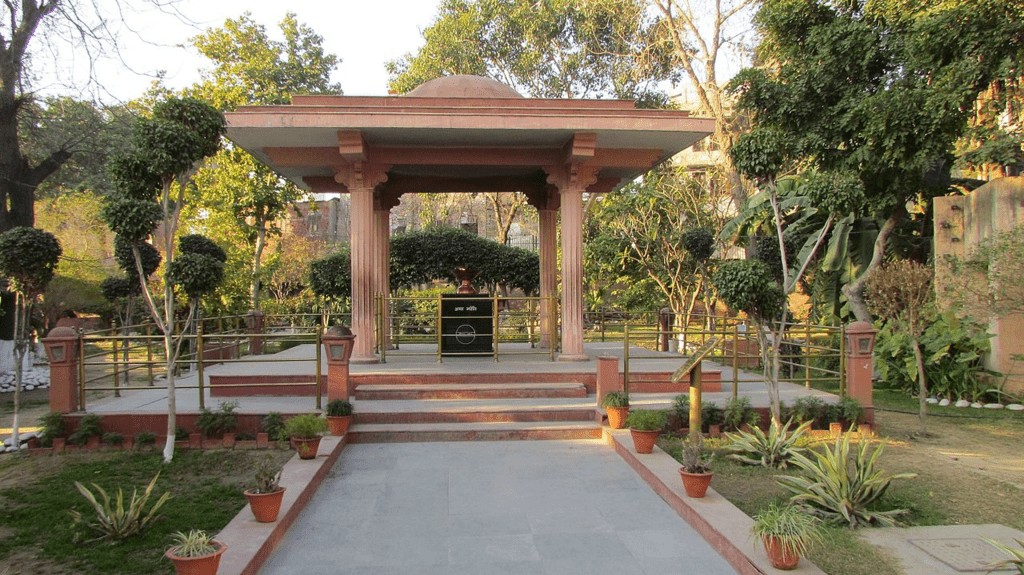Grade 10 Exam > Grade 10 Notes > History for Grade 10 > Jallianwala Bagh Massacre
Jallianwala Bagh Massacre | History for Grade 10 PDF Download
The Jallianwala Bagh massacre was the one of the biggest mass killings in world history. It is also known as the Amritsar massacre.

Background of the Jallianwala Bagh
- The Anarchical and Revolutionary Crimes Act, 1919, popularly known as the Rowlatt Act was passed by the Imperial Legislative Council in March 1919.
- This was a very unpopular bill as it gave the police sweeping powers to arrest and incarcerate anyone suspected of ‘terrorist’ activities without trial for up to two years. It also empowered the police to search without a warrant and put severe restrictions on the freedom of the press.
 Martyr's Memorial
Martyr's Memorial
- The act was condemned across sections in India and there were many protests against its passing. Many Indian members of the Council resigned in protest and this included Madan Mohan Malaviya and Muhammad Ali Jinnah as well.
- Gandhi called for a peaceful Satyagraha but in certain places, protests were marred by rioting and violence.
- In Punjab particularly, the situation was grim. The government was also afraid of a Ghadarite revolution.
- Congress leaders Saifuddin Kitchlew and Satya Pal were arrested in Punjab.
- On 10th April, a few people who were protesting at the residence of Amritsar’s Deputy Commissioner were shot and killed by the police. There were reports of violence at someplace directed against Europeans also.
- The Lieutenant-Governor of Punjab, Michael O’Dwyer put Punjab under martial law which meant that it was unlawful for people to assemble at a place.
Question for Jallianwala Bagh MassacreTry yourself:What was the purpose of imposing the Rowlatt Act?
View Solution
Jallianwala Bagh Massacre
- Jallianwala Bagh Massacre, Jallianwala also spelled Jallianwalla, also called Massacre of Amritsar, incident on April 13, 1919, in which British troops fired on a large crowd of unarmed Indians in an open space known as the Jallianwala Bagh in Amritsar in the Punjab region (now in Punjab state) of India, killing several hundred people and wounding many hundreds more.

- It marked a turning point in India’s modern history, in that it left a permanent scar on Indo-British relations and was the prelude to Mohandas (Mahatma) Gandhi’s full commitment to the cause of Indian nationalism and independence from Britain.
- During World War I (1914–18) the British government of India enacted a series of repressive emergency powers that were intended to combat subversive activities.
- By the war’s end, expectations were high among the Indian populace that those measures would be eased and that India would be given more political autonomy. The Montagu-Chelmsford Report, presented to the British Parliament in 1918, did in fact recommend limited local self-government.
- Instead, however, the government of India passed what became known as the Rowlatt Acts in early 1919, which essentially extended the repressive wartime measures.
- The acts were met by widespread anger and discontent among Indians, notably in the Punjab region.
 Bullet Marks at the site
Bullet Marks at the site
- Gandhi in early April called for a one-day general strike throughout the country. In Amritsar the news that prominent Indian leaders had been arrested and banished from that city sparked violent protests on April 10, in which soldiers fired upon civilians, buildings were looted and burned, and angry mobs killed several foreign nationals and severely beat a Christian missionary.
- A force of several dozen troops commanded by Brig. Gen. Reginald Edward Harry Dyer was given the task of restoring order. Among the measures taken was a ban on public gatherings.
- On the afternoon of April 13, a crowd of at least 10,000 men, women, and children gathered in the Jallianwala Bagh, which was nearly completely enclosed by walls and had only one exit.
- It is not clear how many people there were protesters who were defying the ban on public meetings and how many had come to the city from the surrounding region to celebrate Baisakhi, a spring festival.
- Dyer and his soldiers arrived and sealed off the exit. Without warning, the troops opened fire on the crowd, reportedly shooting hundreds of rounds until they ran out of ammunition.
- It is not certain how many died in the bloodbath, but, according to one official report, an estimated 379 people were killed, and about 1,200 more were wounded. After they ceased firing, the troops immediately withdrew from the place, leaving behind the dead and wounded.
- The shooting was followed by the proclamation of martial law in the Punjab that included public floggings and other humiliations. Indian outrage grew as news of the shooting and subsequent British actions spread throughout the subcontinent.
- The Bengali poet and Nobel laureate Rabindranath Tagore renounced the knighthood that he had received in 1915.
- Gandhi was initially hesitant to act, but he soon began organizing his first large-scale and sustained nonviolent protest (satyagraha) campaign, the noncooperation movement (1920–22), which thrust him to prominence in the Indian nationalist struggle.
 Amar Jyoti
Amar Jyoti
- The government of India ordered an investigation of the incident (the Hunter Commission), which in 1920 censured Dyer for his actions and ordered him to resign from the military. Reaction in Britain to the massacre was mixed, however. Many condemned Dyer’s actions—including Sir Winston Churchill, then secretary of war, in a speech to the House of Commons in 1920—but the House of Lords praised Dyer and gave him a sword inscribed with the motto “Saviour of Punjab.” In addition, a large fund was raised by Dyer’s sympathizers and presented to him. The Jallianwala Bagh site in Amritsar is now a national monument.
Question for Jallianwala Bagh MassacreTry yourself:Why did General Dyer order to open fire on a peaceful demonstration at Jallianwala Bagh?
View Solution
The document Jallianwala Bagh Massacre | History for Grade 10 is a part of the Grade 10 Course History for Grade 10.
All you need of Grade 10 at this link: Grade 10
|
19 videos|61 docs|30 tests
|
FAQs on Jallianwala Bagh Massacre - History for Grade 10
| 1. What is the background of the Jallianwala Bagh? |  |
Ans. The Jallianwala Bagh is a public garden in Amritsar, Punjab, India. It gained historical significance due to the Jallianwala Bagh Massacre that took place on April 13, 1919.
| 2. What happened during the Jallianwala Bagh Massacre? |  |
Ans. During the Jallianwala Bagh Massacre, British Indian Army soldiers under the command of Colonel Reginald Dyer fired upon a crowd of unarmed Indians who had gathered in the Jallianwala Bagh for a peaceful protest against the repressive Rowlatt Act. The firing resulted in the death of hundreds of Indians and left many more injured.
| 3. How did the Jallianwala Bagh Massacre impact the Indian freedom struggle? |  |
Ans. The Jallianwala Bagh Massacre became a turning point in the Indian freedom struggle. The brutal incident led to widespread outrage and increased demands for independence from British rule. It united people across different regions and communities, fueling the momentum for the freedom movement.
| 4. Were there any consequences for those responsible for the Jallianwala Bagh Massacre? |  |
Ans. Yes, there were consequences for those responsible for the Jallianwala Bagh Massacre. Colonel Reginald Dyer, the officer in charge, was relieved of his duty, but he received support and admiration from some sections of British society. The massacre also sparked an official inquiry, known as the Hunter Commission, which criticized Dyer's actions but stopped short of holding him fully accountable. Nevertheless, the incident further eroded the credibility of British rule in India.
| 5. How is the Jallianwala Bagh remembered today? |  |
Ans. The Jallianwala Bagh is remembered as a site of historical significance and a symbol of sacrifice and resistance. The garden has been preserved as a memorial to commemorate the lives lost during the massacre. It serves as a reminder of the atrocities committed during the colonial era and continues to be a place of remembrance and reflection for Indians seeking justice and freedom.
Related Searches

















